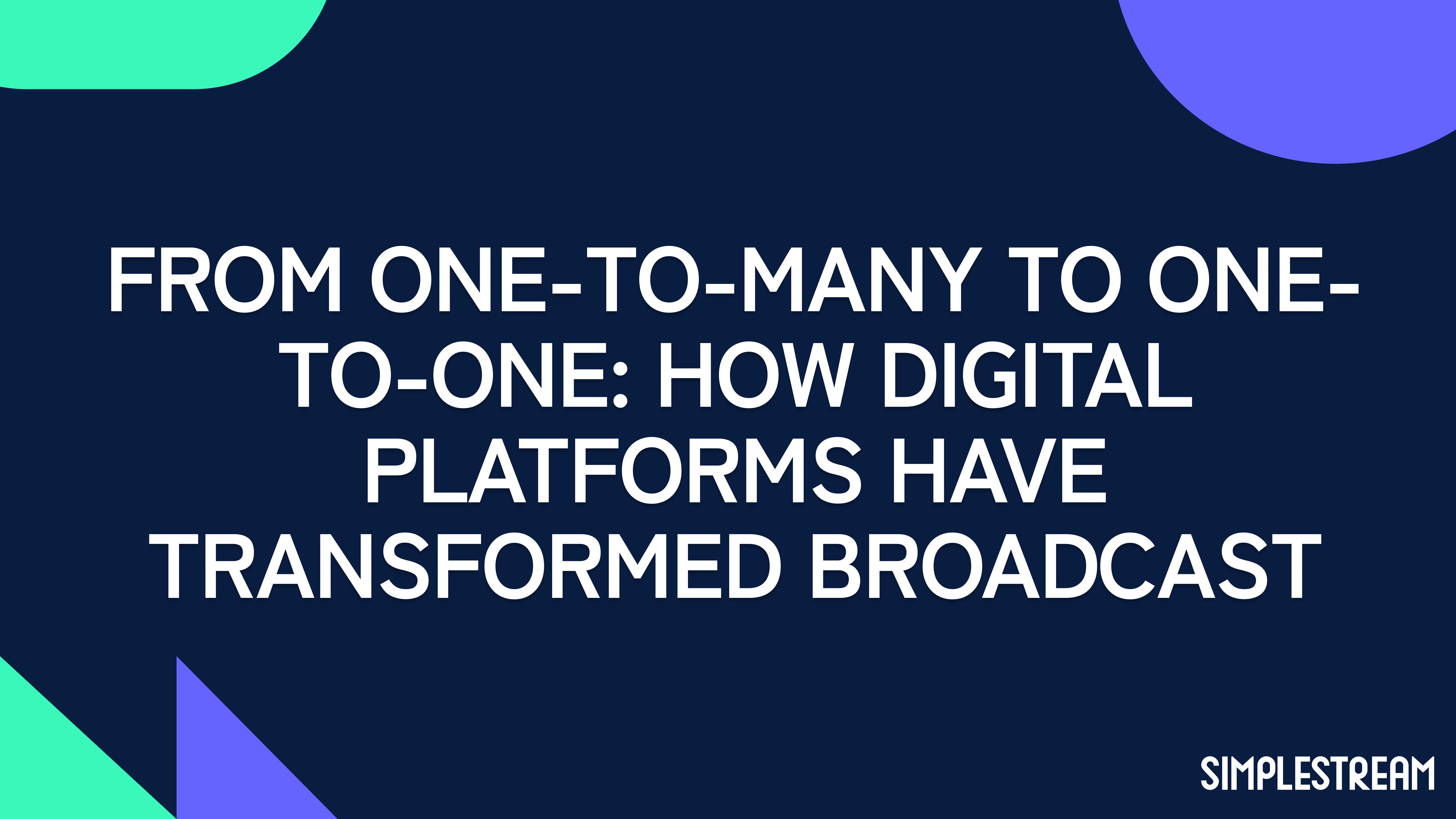Make streaming services profitable (again)
Profitability is the new challenge. Streaming services, after years of financial backing, are on a crusade to make their business profitable, where growth is the password for success.
It’s been years since the likes of Netflix opened their virtual doors to – what was – an eager audience looking for a simple way to access premium content at home. Streaming services satisfied that desire. We’re certainly past the gold rush period, shareholders are keen to see returns from their original investment. Especially in times of change, with streaming progressively replacing traditional distribution of video content, with new monetisation models implemented.
Media companies are under increased pressure to turn a profit. The problem most face is that increased competition drove subscription prices down in a bid to capture subscribers. It wasn’t sustainable, and now as prices increase to levels that can support a viable streaming business, so too does subscriber churn.
You need only look at some of the largest streaming services to see that there’s certainly a viable business. The real challenge comes in delivering this experience sustainably, and at an acceptable price point.
Read on to find out which streaming services are profitable today, and what the future of direct-to-consumer (D2C) propositions looks like.

Netflix & frenemies: who’s profitable and who’s not?
Starting with arguably the most well-known streaming service there is, Netflix reported a profit of nearly $5.4 billion in 2023. This places the streaming giant in the black by some margin, and profit is projected to continue.
The service provided to customers is industry-leading when it comes to features and user experience, contributing to its success. The Los Gatos-based company also recently announced it will stop reporting on the number of active subscribers, starting from Q1 of 2025, amid rising profit numbers, and to focus on other metrics to measure operating margins and revenue.
Netflix – as per findings of the most recent Streaming Profit Report – is profitable by a significant margin, but it’s not the only streaming service reporting a 'plus sign’ when it comes to revenues vs costs. Warner Bros. Discovery also stands out with a profit of $103 million in 2023, but this was the only exception, with all other major services worldwide reporting losses (Disney, Paramount Global, NBCUniversal).
Hollywood media companies are trying to follow the path Netflix created, to get a share of that success. The issue is that Netflix was a technology company first, and a media company second, not vice versa. Not to mention the head start it has over the competition, of which some are only a few years into building their streaming service.
Narrowing losses: the case of Disney+
Disney drew the curtain on 2023 with a grand total of 149.6 million of Disney+ subscribers, in decline if compared to the previous year (mostly due to the challenges with Hotstar in India). With higher revenues from the streaming unit, the company has marked a substantial step forward when it comes to narrowing streaming losses, excluding ESPN+ (part of the sports branch of the company).
Disney was able to cut streaming losses by more than a half in 2024, and CEO Bob Iger was rather categorical in a recent interview at CNBC’s ‘Squawk on the Street’: "Losses for about $4 billion a year were not sustainable. There’s been huge improvement and we know exactly how we delivered that improvement. Now we have to turn this not only into a profitable business, but also a growth business".
SVOD churn: causes and effects
Churn in the streaming subscription space has been hot topic for a few years now. From subscription fatigue to increases in pricing, several causes have been identified as key contributors to subscribers cancelling their commitment across OTT and streaming services.
Pricing seems to be one of the main contributors, amid steady growth in costs to access streaming platforms in the past half-decade or so. Brands in the big tech space have thrown remarkable amounts of money into building and growing owned and operated platforms and content libraries, mostly to try and compete for the throne of the streaming world. Yet, participating in the streaming wars has become more and more expensive. Netflix has raised the cost of its subscription multiple times since launch. So has done Disney+, since its early days in 2019. Amazon Prime Video, but also Paramount Plus and other similar services worldwide are charging their subscribers more than they did a few years ago.
Cost of living-related challenges are not the only reason subscribers are choosing to reduce their spending on streaming services. Recent measures to limit password sharing across multiple households have had a remarkable impact too. The recent Horowitz Research’s State of Media, Entertainment & Tech: Subscriptions 2024 report highlighted that half of TV content viewers in the US only have cancelled or lost access to at least one of their services within the past year. The main reasons cited include efforts to cut subscription costs, price hikes, a perceived lack of value for the cost, and – notably (30%) – not being able to share or borrow log-ins.
If Netflix has already started its password-sharing crackdown, Disney+ is next in line. CEO Bob Iger announced the company’s first foray into improper login details sharing starting from summer 2024.
Reducing churn
Retention comes first
As Forbes recently reported, reducing churn should be the top priority for media companies. The rate at which subscription-based services lose their subscribers naturally leads to loss of revenue. Churn rates are an indication of long-term success for such platforms, and most importantly, they directly relate to the customer lifetime value (LTV).
Subscribers are no longer a vanity metric, and dedicated retention strategies – better if based on smart, data-driven predictive tools – should be top of the agenda of content providers of any size. It’s about the quality of a service and the content provided, but also the customer experience. An example of the tactics brands are adopting to improve is user journey segmentation, to further personalise the experience for subscribers.
Alternative business models: ad-supported tiers
The ‘Consumers in the modern age’ report Simplestream published in September 2023 provided insightful findings from a survey delivered to a sample audience comprising of 300 consumers in the UK (aged 18-65). The end-users were asked about plans to subscribe to new live or on-demand streaming services in 2024.
More than a half of the population represented (52%) stated they had no intention to add new services to the portfolio of existing subscriptions.
Also, 57% of the sample audience surveyed answered positively when asked whether the proposal of a cheaper or free-to-access, ad-supported pricing bracket for a given service would stop them from unsubscribing.
Ad-supported services have been on the rise for a few years, and the opportunities (in terms of added revenue) have immediately entered the radar of big tech and the usual giants in the SVOD space. Netflix, Disney+, and Amazon Prime – just to name the most popular ones – have rolled out their ad-supported offering, either at a lower price point when compared to the standard, ad-free platform, or by making the AVOD version the norm, with a more expensive tier of subscription available to switch back to an ad-free experience.
Conclusions
Profitability is a data-driven beast, which can be difficult to address when delivering media to consumers. Selling subscriptions isn’t as simple as the opportunity that Netflix had all those years ago. The data needed to help build a profitable streaming service encompasses everything from the user journey when using the service, to the customer churn rate. Understanding and contextualising that data is how a service can become successful.
Amid a very complex competitive landscape, streaming services are fighting for popularity, but also to respond to the demands of shareholders. With a focus on greater annual revenue per user (ARPU), and lower operational costs, OTT and streaming platforms have the opportunity to devise new strategies that will project them into the future. A future that’s characterised by continuous technological innovation and ever-evolving consumption habits among hungry audiences. Looking beyond the revenue and at the service customers are provided is paramount to building a streaming service that endures.


